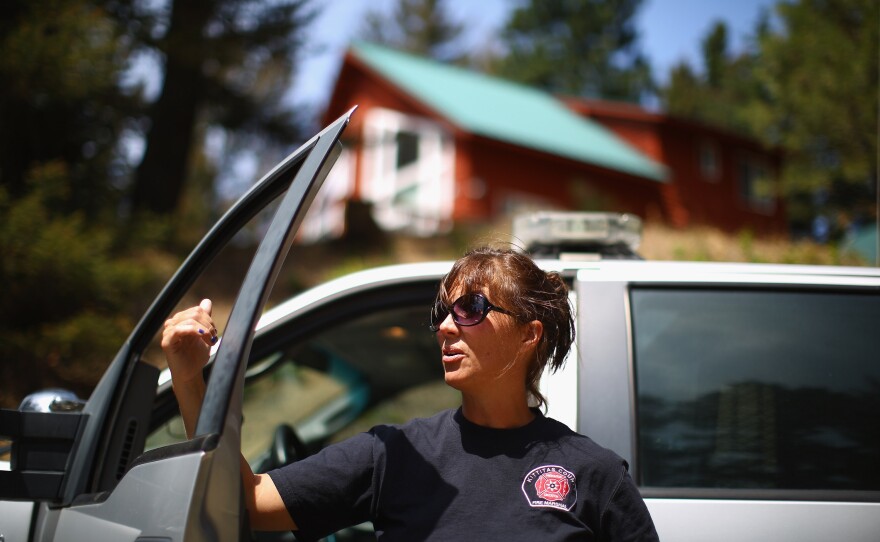

The iconic forests of the Pacific Northwest — with their towering, moss-covered fir and pine trees — have never been this dry. The grass underneath the ferns has already turned gold.
Of the five large wildfires burning in Washington alone right now, one has scorched more than 1,500 acres of a rainforest on the typically misty Olympic Peninsula.
The wildfire threat in the drought-stricken Pacific Northwest right now is extraordinary, and there are concerns that the region may not be prepared for a long summer.
A Wake-Up Call
One place that's seen a spate of unusually mild and dry winters — along with the dreaded, long hot summers — is the eastern slope of the Cascade Mountains.
In Wenatchee, Wash., where the forest gives way to rolling hills covered with prairie and apple orchards, the wildfire conditions so far this summer have been more like what's common in late August or September.
The home of Cindy and Jonathan Dominguez burned to the ground in minutes a couple weeks ago in the city's Broadview neighborhood.
"It came right over that hill ... a big wall of fire," says Cindy Dominguez.
That day, when the temperature hit 109, the raging Sleepy Hollow Fire burned down a steep canyon of prairie and then back up into their neighborhood.
It leveled the Dominguez home and more than two dozen others. Embers also drifted deeper into Wenatchee. More than a mile from the home, flames engulfed three fruit-packing warehouses.
For locals, it's a wake-up call.
"It could have been way worse, just the wind shifted and by the grace of somebody, it wasn't worse than this," Dominguez says.
But this is the new reality in Washington state and the rest of the Pacific Northwest. Until recently, the idea of a wildfire burning into a city neighborhood was something more associated with southern California or the front range of Colorado.
But not anymore. This severe drought, coupled with what fire managers say is a changing climate, is raising questions about whether "wet" Washington is ready to adapt to this new reality.
Unprecedented Conditions
In Kittitas County, where Interstate 90 winds down Snoqualmie Pass, Fire Marshal Brenda Larsen has banned campfires and the burning of trash and leaves. Officials are also trying to get fireworks banned.
"I've never implemented a burn ban in June," Larsen says. "I've never seen something like this."
Development has exploded in these mountains lately. Land that was formerly owned by the timber companies has been sold and carved up into luxury subdivisions. There are expensive homes catering to Seattle tech workers as well as vacation cabins — old and new — scattered throughout the area.
And this year, given the drought, everything is in the middle of dense, dried-out fuel.
"We certainly don't want to have a responder injured or killed defending somebody's assets when they've built in these areas," Larsen says.
That's the tension all over the West. But it's pretty new to this part of Washington. Fire officials are especially worried because they say neighborhoods like these in typically wetter forests lag behind when it comes to wildfire prevention. It just hasn't been on the radar as much until recently.
Larsen steers her pickup truck up a steep, narrow road through a heavily forested subdivision. There's only one way in and one way out. And this neighborhood's code has long required people to keep all the native vegetation around their homes. It's exactly the opposite of what fire prevention should look like given the current conditions.
"When you start to think of the potential for loss of life in areas like this, it's terrifying," Larsen says.
Fire managers aren't being overdramatic when they say things like that. The forecast in the Pacific Northwest warns of more lightning and hot weather moving in by week's end.
Copyright 2015 NPR. To see more, visit http://www.npr.org/.






